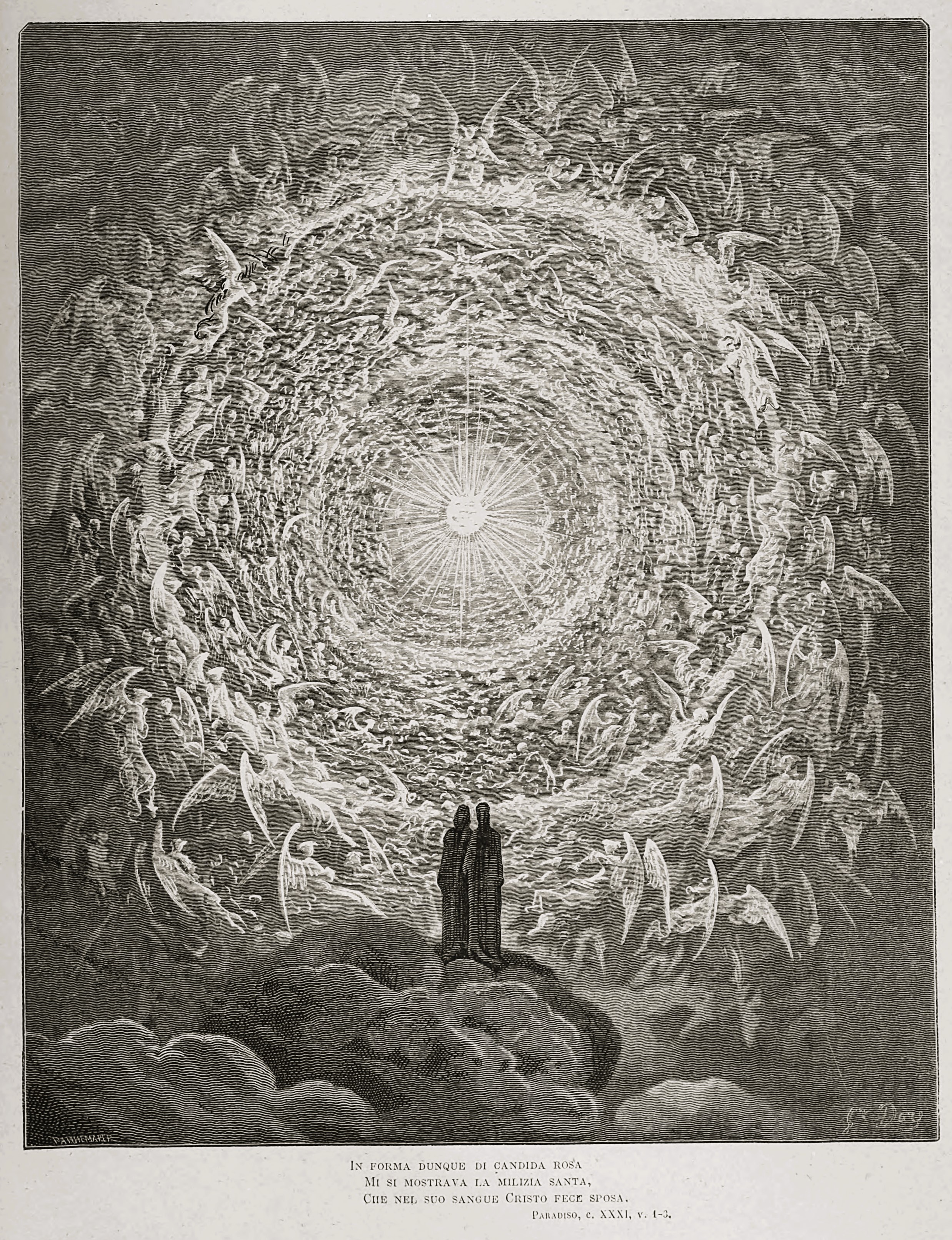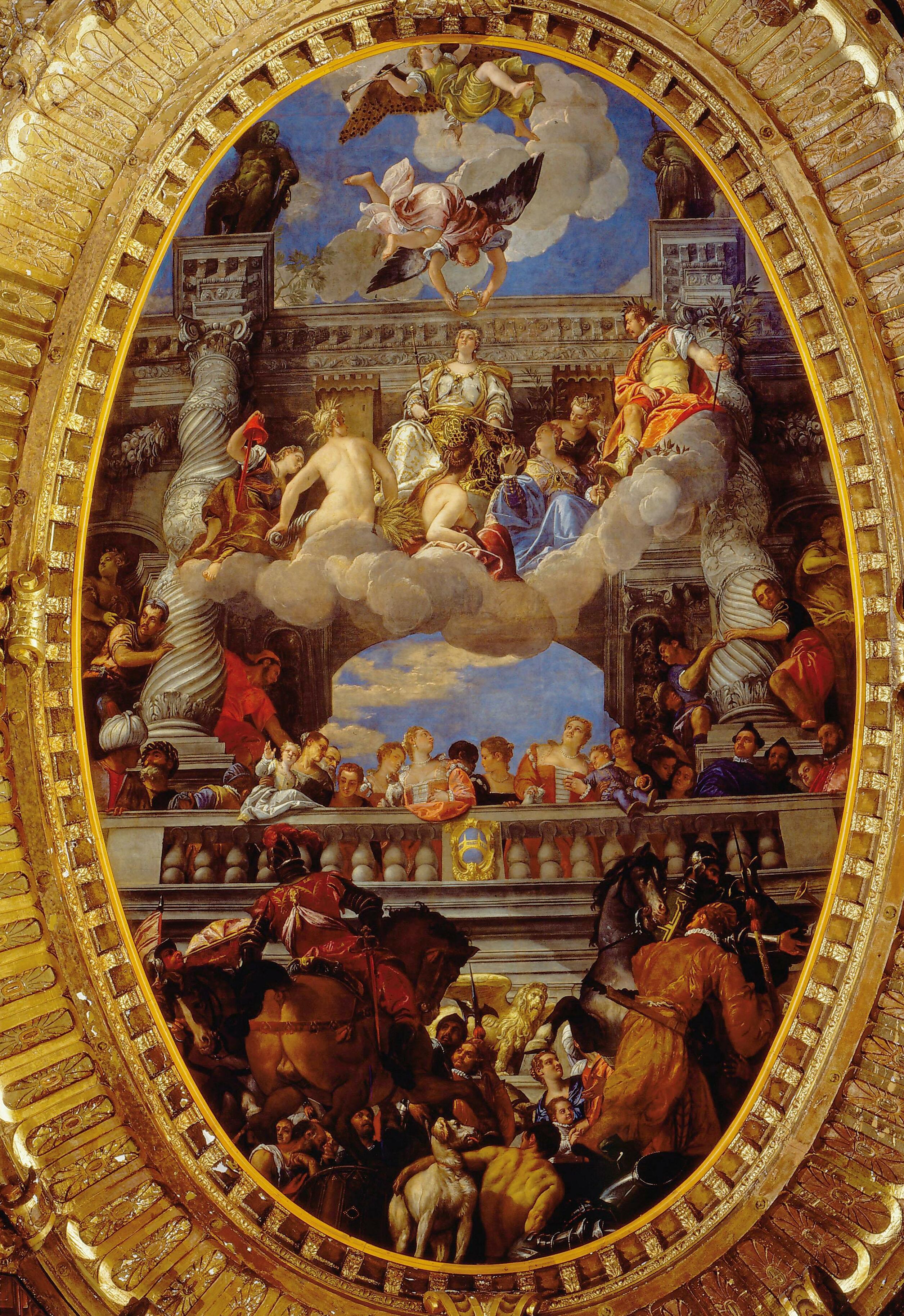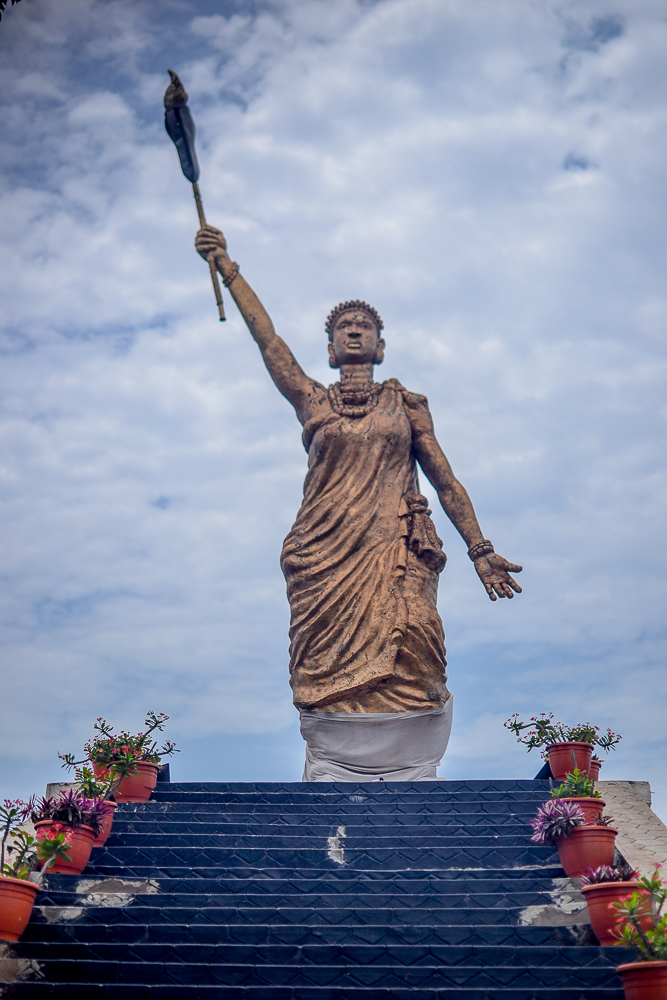|
Oke Ora
Oke Ora (Yoruba language, Yoruba: ''Òkè Ọ̀rà'') is an ancient community and archaeological site situated on a hill about east of Ifẹ̀, Ufẹ̀ (Ilé-Ifẹ̀), in between the city and the small village of Itagunmodi. Two important characters in the early history of Yorubaland; Oranfe, Oranife (Oramfe) and Oduduwa came from Oke Ora. Several stories and legends of the Yoruba people surround the site. In the Yoruba creation legend, it was the first mound of earth formed from the soil in a snail shell and from which Ife, Ife, the first settlement was built. Today, it continues to play an important role in certain religious rites of the Ife people, most significantly, in the coronation rituals of the List of rulers of Ife, Ọwọni (Ooni), king of Ifẹ̀. Name The name ''Oke Ora'' owes its etymology to two separate words; ''Òkè'' and ''Ọ̀ra''. In the Yoruba language, ''Òkè'' means a mountain or hill, while ''Ọ̀ra'' is a deity, who is one of the highest ranking in I ... [...More Info...] [...Related Items...] OR: [Wikipedia] [Google] [Baidu] |
Ife East
Ife East is a Local Government Area in Osun State, Nigeria. Its headquarters are in the town of Oke Ogbo. It has an area of 172 km and a population of 188,087 at the 2006 census. The postal code A postal code (also known locally in various English-speaking countries throughout the world as a postcode, post code, PIN or ZIP Code) is a series of letters or digits or both, sometimes including spaces or punctuation, included in a postal a ... of the area is 220. References . Local Government Areas in Osun State {{Osun-geo-stub ... [...More Info...] [...Related Items...] OR: [Wikipedia] [Google] [Baidu] |
Ugbo Kingdom
The Ugbo Kingdom is a kingdom in Ilaje local government area of Ondo State, South West Nigeria, with its capital in Ode Ugbo. The people of Ugbo Kingdom are predominantly fishermen. History * Administration Ugbo Kingdom consists of sixteen quarters and is headed by appointed chiefs according to their traditions and customs. One of the heads of the quarters, called Chief Gbogunron, is responsible for putting the traditional ritual leaves on the newly appointed King on coronation day. Geography Ugboland is located along the coastal shores of South-Western Nigeria. Close neighbours of Ugbo people include the Ikales, the Itshekiris, the Ijaws, the Apois, the Ijebus, and the Edos. Ugboland occupies the coastline of the South-Western region of Nigeria in the current Ondo State. The entire area consist coastal landmarks, creeks, rivers and lagoons. It is within the western zone of the Niger Delta beginning from the Bight of Benin in the East, and all the way from Oghoye through several ... [...More Info...] [...Related Items...] OR: [Wikipedia] [Google] [Baidu] |
Archaeological Sites In Nigeria
Archaeology or archeology is the scientific study of human activity through the recovery and analysis of material culture. The archaeological record consists of artifacts, architecture, biofacts or ecofacts, sites, and cultural landscapes. Archaeology can be considered both a social science and a branch of the humanities. It is usually considered an independent academic discipline, but may also be classified as part of anthropology (in North America – the four-field approach), history or geography. Archaeologists study human prehistory and history, from the development of the first stone tools at Lomekwi in East Africa 3.3 million years ago up until recent decades. Archaeology is distinct from palaeontology, which is the study of fossil remains. Archaeology is particularly important for learning about prehistoric societies, for which, by definition, there are no written records. Prehistory includes over 99% of the human past, from the Paleolithic until the advent ... [...More Info...] [...Related Items...] OR: [Wikipedia] [Google] [Baidu] |
Ife Empire
The Ife Empire was the first empire in Yoruba history. It was founded in what is now southwestern Nigeria and eastern Benin today. The Ife Empire lasted from 1200 to 1420. The empire was founded by Odùduwà and became well-known for its sophisticated art pieces. Although Yoruba was the main language of the empire, there were also various spoken dialects and languages. It rose to power through trade with Sahelian and forest states. Its capital city, Ilé- Ife, was one of the largest urban centers in 14th century West Africa. History Formation and early history The Ife region began as a small collection of house societies in mid-first millennium, which over time grew to become “mega houses”, or mini-states, due to competition for resources. Over time, as managing resources, population, and conflicts presented opportunities for new organizational structures, several of the mega-houses started organizing themselves into confederacy-like associations. The most prominent of thes ... [...More Info...] [...Related Items...] OR: [Wikipedia] [Google] [Baidu] |
Oba's Crown
An Oba's crown represents the highest level of authority vested in Yoruba rulers. Referred to as an Ade, the bead-embroidered crown is the foremost attribute of the ruler. An oba's crown may also be referred to as an Adenla, or great crown. Andenla are elaborate conical headdresses, like the ade, but feature a heavily beaded veil that covers the face. In his article on the topic, Robert F. Thompson writes, "The crown incarnates the intuition of royal ancestral force, the revelation of great moral insight in the person of the king, and the glitter of aesthetic experience." Usage After being consecrated as leader, a Yoruba oba must not reveal his face to the public. Instead, he wears an ade or adenla. Oba crowns typically feature at least one stylized face depicted in applied beadwork and designed to identify the king when appearing in public. Some examples of crowns have more than one face. Although their significance is unknown, depictions are frequently associated with Odùduwà ... [...More Info...] [...Related Items...] OR: [Wikipedia] [Google] [Baidu] |
Olokun
Olokun (Yoruba: Olókun) is an orisha spirit in Yoruba religion. Olokun is believed to be the parent of Aje, the orisha of great wealth and of the bottom of the ocean. Olokun is revered as the ruler of all bodies of water and for the authority over other water deities. Olokun is highly praised for their ability to give great wealth, health, and prosperity to their followers. Communities in both West Africa and the African diaspora view Olokun variously as female, male, or androgynous. West Africa Water deities are "ubiquitous and vitally important in southern Nigeria"; Olókun worship is especially noted in the cities of the Edo people in southwest Nigeria. In West African areas directly adjacent to the coast, Olokun takes a male form among his worshipers while in the hinterland, Olokun is a female deity. According to Yoruba traditions about their divine dynasty, Olokun - in her female incarnation - was the senior wife of Emperor Oduduwa. Her rivalry with one of his other ... [...More Info...] [...Related Items...] OR: [Wikipedia] [Google] [Baidu] |
Orisha
Orishas (singular: orisha) are spirits that play a key role in the Yoruba religion of West Africa and several religions of the African diaspora that derive from it, such as Cuban, Dominican and Puerto Rican Santería and Brazilian Candomblé. The preferred spelling varies depending on the language in question: òrìṣà is the spelling in the Yoruba language, orixá in Portuguese, and orisha, oricha, orichá or orixá in Hispanophone, Spanish-speaking countries. According to the teachings of these religions, the orishas are spirits sent by the supreme creator, Olodumare, to assist humanity and to teach them to be successful on ''Ayé'' (Earth). Rooted in the Yoruba religion, native religion of the Yoruba people, most orishas are said to have previously existed in òrún - the spirit world - and then became Irúnmọlẹ̀ - spirits or divine beings incarnated as human on Earth. Irunmole took upon a human identity and lived as ordinary humans in the physical world, but because ... [...More Info...] [...Related Items...] OR: [Wikipedia] [Google] [Baidu] |
Heaven
Heaven or the heavens, is a common religious cosmological or transcendent supernatural place where beings such as deities, angels, souls, saints, or venerated ancestors are said to originate, be enthroned, or reside. According to the beliefs of some religions, heavenly beings can descend to Earth or incarnate and earthly beings can ascend to Heaven in the afterlife or, in exceptional cases, enter Heaven alive. Heaven is often described as a "highest place", the holiest place, a Paradise, in contrast to hell or the Underworld or the "low places" and universally or conditionally accessible by earthly beings according to various standards of divinity, goodness, piety, faith, or other virtues or right beliefs or simply divine will. Some believe in the possibility of a heaven on Earth in a '' world to come''. Another belief is in an axis mundi or world tree which connects the heavens, the terrestrial world, and the underworld. In Indian religions, heaven is cons ... [...More Info...] [...Related Items...] OR: [Wikipedia] [Google] [Baidu] |
Apotheosis
Apotheosis (, ), also called divinization or deification (), is the glorification of a subject to divine levels and, commonly, the treatment of a human being, any other living thing, or an abstract idea in the likeness of a deity. The term has meanings in theology, where it refers to a belief, and in art, where it refers to a genre. In theology, ''apotheosis'' refers to the idea that an individual has been raised to godlike stature. In art, the term refers to the treatment of any subject (a figure, group, locale, motif, convention or melody) in a particularly grand or exalted manner. Ancient Near East Before the Hellenistic period, imperial cults were known in Ancient Egypt ( pharaohs) and Mesopotamia (from Naram-Sin through Hammurabi). In the New Kingdom of Egypt, all deceased pharaohs were deified as the god Osiris. The architect Imhotep was deified after his death. Ancient Greece From at least the Geometric period of the ninth century BC, the long-deceased heroes ... [...More Info...] [...Related Items...] OR: [Wikipedia] [Google] [Baidu] |
Moremi Ajasoro
Moremi Ajasoro (Yoruba: ''Mọremí Àjàṣorò'') was a legendary Yoruba queen and folk heroine in the Yorubaland region of present-day southwestern Nigeria who is fabled to have assisted in the liberation of the Yoruba kingdom of Ife from the neighbouring Ugbo Kingdom. Moremi was married to Oranmiyan, the son of Oduduwa, the first king of Ife. Biography The Ayaba (Queen Consort) Moremi lived in the 12th century, hailed from Offa, and was married to Oranmiyan, the heir to the king of Ife and son of the founding father of the Yoruba people, Oduduwa Ile-Ife was a kingdom that was said to have been at war with an adjoining tribe who were known to them as the ''Forest people''. (Ugbò in the Yoruba language, though the said tribe is believed by scholars to have had no relation to the contemporary Ugbòs of modern Nigeria). Scores of Ife citizens were being enslaved by these people, and because of this they were generally regarded with disdain by the Yoruba city-states. Alth ... [...More Info...] [...Related Items...] OR: [Wikipedia] [Google] [Baidu] |
Prehistoric West Africa
The prehistory of West Africa spans from the earliest human presence in the region until the emergence of the Iron Age in West Africa. West African populations were considerably mobile and interacted with one another throughout the population history of West Africa. Acheulean tool-using archaic humans may have dwelled throughout West Africa since at least between 780,000 BP and 126,000 BP (Middle Pleistocene). During the Pleistocene, Middle Stone Age peoples (e.g., Iwo Eleru people, possibly Aterians), who dwelled throughout West Africa between MIS 4 and MIS 2 (71-29 kya), were gradually replaced by incoming Late Stone Age peoples, who migrated into West Africa as an increase in humid conditions resulted in the subsequent expansion of the West African forest. West African hunter-gatherers occupied western Central Africa (e.g., Shum Laka) earlier than 32,000 BP, dwelled throughout coastal West Africa by 12,000 BP, and migrated northward between 12,000 BP and 8000 BP as far as M ... [...More Info...] [...Related Items...] OR: [Wikipedia] [Google] [Baidu] |
.jpg)






